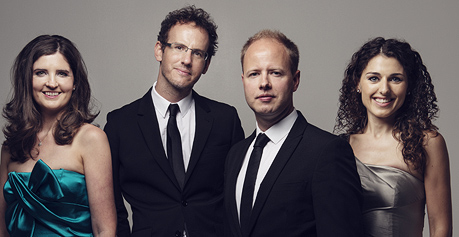
THE Carduccis, who are celebrating their 25th anniversary, are nothing if not adventurous.
Although they played Beethoven’s mighty Op 127 at the end of their programme for the British Music Society of York, they opened with Fanny Mendelssohn and Simon Rowland-Jones.
Felix Mendelssohn’s older sister was discouraged from composing even by members of her own family; it was not a “ladylike” activity. She was not to be deterred. But it took until the late 20th century for the quality of her works to receive proper recognition.
Fanny’s String Quartet in E flat, although written in 1834, was first published more than 150 years later, in 1988. Unusually, it opens with an enchanting slow movement of lyrical meanderings, which set the tone for the succeeding Allegretto. The Carduccis made one of their few false moves of the evening by opening this too fast for the fugal activity it contains, which had to be reined back.
A minor-key Romance, which moved briefly into the major, was unexpectedly edgy. The finale, Allegro molto vivace, was best suited to the Carduccis’ mood and enjoyed impeccable ensemble despite its furious tempo.
Simon Rowland-Jones’s Quartet No 7 was written for this group five years ago. It is subtitled Flock Of Knot (a knot is a small shore bird of the sandpiper family, should you be wondering). Its three inter-linked movements chart the sudden arrival, feeding procedures and equally startling departure of birds encountered during a winter stroll on Holkham Beach, Norfolk.
A babel of high-lying birdcalls, in rapid, tightly woven counterpoint, suddenly swoops low. The resultant calm is deceptive, growing ever more intense, although at a much slower pace; after a forceful climax, it fades into a cello solo that leads into the final, lively scherzo, which recalls elements of the opening. As the tessitura rises, it starts to fade into a concluding viola solo.
It can hardly be coincidental that Rowland-Jones is a viola player himself, having been a founder member of the Chilingirian Quartet. Autobiography aside, the piece is beautifully structured and constantly intriguing; it earned the Carduccis’ keenest attention.
We must be forever indebted to Prince Nikolai Golitzïn for commissioning the first three of Beethoven’s five late quartets. The first of these – and the only one to be published during the composer’s lifetime – was Op 127 in E flat major, and was given by the Carduccis as if their lives depended on it.
The opening chordal motif, twice repeated, was bold and rich and led into an Allegro of intoxicating momentum. The second variation in the Adagio was almost jaunty, but elsewhere its atmosphere was reverential, including wonderful dialogue between leader and cello and a pianissimo coda that evoked the former’s sweetest tone.
In the Scherzando, rhythms were incredibly crisp, reaching a peak of nervous electricity in its Presto section. Similarly, accents were supremely resolute in the finale, which reached a spellbinding vision of heavenly bliss in the coda before a dazzling finish. This was Beethoven playing of world class.
Review by Martin Dreyer
